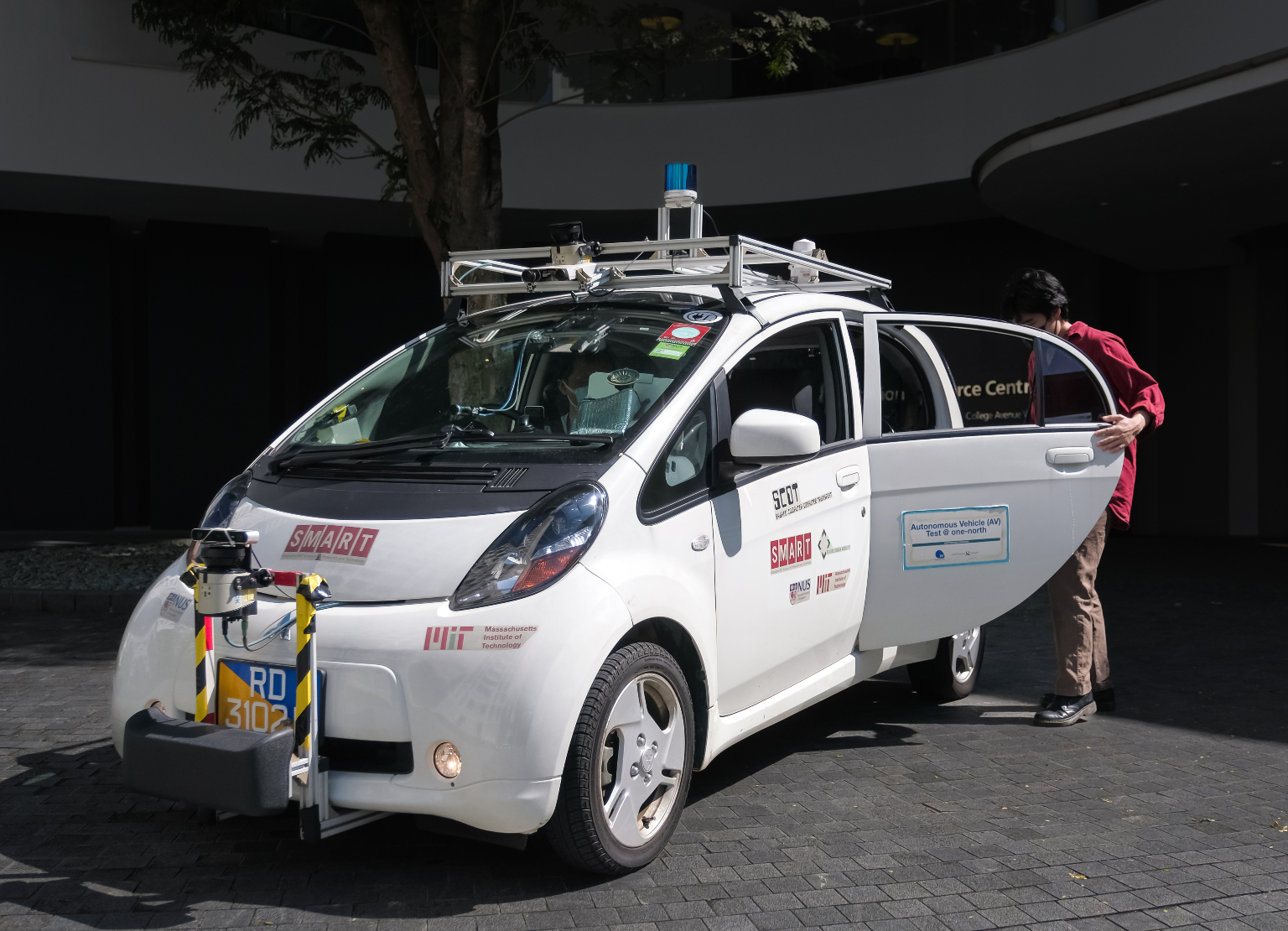SINGAPORE - National University of Singapore (NUS) students on Thursday (Jan 6) had a glimpse of Singapore's possible transport future, finding themselves trundling alongside self-driving golf carts and devices such as a scooter.
The autonomous devices hummed slowly by or manoeuvred out of their way on the university's Kent Ridge campus, ferrying visibly excited students who formed queues to try out the trips that ran every 15 minutes.
The eight-hour pop-up and real-world trial involved four golf carts, a wheelchair, a scooter and a car.
In place of a steering wheel, there is a large computer screen that shows the devices' reading of their surroundings. Brake pedals are depressed without anyone stepping on them, while internal sensors track how far the vehicles have moved by calculating the number of turns their wheels have made.
They were designed by Singapore-Massachusetts Institute of Technology Alliance for Research and Technology (Smart), a research enterprise set up more than 10 years ago to introduce future mobility solutions.
Overseeing what Smart called a "robot parade" was Professor Marcelo Ang of the Department of Mechanical Engineering at NUS, who said he envisioned a future where people could book driverless golf carts on an app to take them to a driverless car pickup point.
Prof Ang, who is Smart's Singapore co-investigator, predicted that autonomous vehicles (AV) would eventually be safer than cars driven by humans, touting them as a solution to do away with what he called the bad Ds - "dangerous tasks, degrading tasks, demeaning tasks and driving".
"When I retire, I want to be able to visit my friends or go anywhere without calling my son to pick me up. I want to be mobile without having to rely on a driver," he said.
"Instead of driving, I can check my e-mail, saving one hour of my working time that can later be used to spend more time with my family."
But the students who rode the autonomous vehicles on Thursday would have inevitably noticed kinks.
The vehicles' ability to bypass obstacles remain fairly limited - they rely mostly on travelling along a fixed route and often stop dead in their tracks when, say, a group of students are in the way.
When exiting a small lane onto a bigger road, the vehicles also take time to calibrate to match the new driving speed and road conditions. The wheelchair, scooter and golf carts travel at a maximum speed of 5kmh - a brisk walking pace - while the car's speed is capped at 30kmh for safety reasons.

Prof Ang acknowledged the limitations and said the industry worldwide is still figuring out the technical details of autonomous driving, but said Singapore is one of the most AV-ready countries in the world.
"What other countries can do, we also can do. What they cannot do, we also cannot do," he said. "Right now, we can deploy along a fixed route where if the vehicle in front of me speeds up, I also speed up. But we should not deploy it like that, because with all that traffic, people will think AVs are stupid."

"To have widespread AV use, we need to be able to overtake or change lanes. The ultimate test is manoeuvring at a roundabout, and that will take time."
He said it remains difficult to predict human behaviour and the actions of other drivers. "How do I predict that if I overtake, another driver might get angry and also speed up? If I program it to also speed up, it might be dangerous so the program also needs to know when to give in. This will take at least another 10 years."

AV trials have proceeded apace in recent years here, from driverless vehicles in Singapore Armed Forces camps to driverless buses on Jurong Island.
Driverless vehicles are already allowed to use the whole of western Singapore as a test bed, once given permission. A self-driving car test centre was opened in 2017 outside the Nanyang Technological University where AVs can be put through their paces and be subjected to rigorous tests, including aggressive driving and interactions with other road users.
But the question of who bears responsibility in the event of an accident remains a bugbear, in addition to continued inability to anticipate other drivers' reactions. For now, such experiments are confined to safer spots such as the NUS campus.
Mr Tay Hongchen, 21, a second-year NUS student, said: "I'm open-minded about AVs but can't see them taking to our streets any time soon. I just hope to see them safely used in my lifetime."

